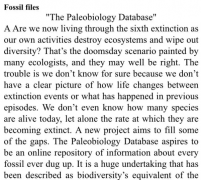2019年1月19日雅思阅读考试真题回顾
来源:青岛朗阁
浏览:
发布日期:2019-01-23 09:35
摘要:2019年1月19日雅思考试已经结束,在这为了帮助大家更好的了解这次考试,朗阁海外考试研究中心曲志国老师就为大家带来2019年1月19日雅思阅读考试真题回顾,大家一起来看看吧。
2019年1月19日雅思考试已经结束,在这为了帮助大家更好的了解这次考试,朗阁海外考试研究中心曲志国老师就为大家带来2019年1月19日雅思阅读考试真题回顾,大家一起来看看吧。
| 考试日期: | 2019年1月19日 |
| Reading Passage 1 | |
| Title: | 印刷书籍的历史 |
| Question types: |
TRUE/FALSE/NOT GIVEN 4题 Flow Chart 5题 Blank Filling 4题 |
| 文章内容回顾 | 介绍了印刷书籍的历史,包括引入部分,印刷书籍的流程和印刷书籍的流传经历。 |
| 题型技巧分析 |
判断题注意事项: 1. 找出题目中的关键词,最好先定位到原文中的一个段落。将题目中的关键词与原文各段落的小标题或每段话的第一句相对照。有些题目能先定位到原文中的一个段落,这必将大大加快解题时间,并提高准确率。但并不是每个题目都能先定位到原文中的一个段落的。 2. 从头到尾快速阅读该段落,根据题目中的其它关键词,在原文中找出与题目相关的一句或几句话。确定一个段落后,答案在该段落中的具体位置是未知的。所以,需要从头到尾快速阅读该段落,找出该段落中与题目相关的一句话或几句话,通常是一句话。 3. 仔细阅读这一句话或几句话,根据第二大步中的原则和规律,确定正确答案。 4. 要注意顺序性,即题目的顺序和原文的顺序基本一致。 |
| 剑桥雅思推荐原文练习 | 剑9 Test 1 Passage 3 |
| Reading Passage 2 | |
| Title: | 澳洲的古老部落 |
| Question types: |
Matching Information TRUE/FALSE/NOT GIVEN Blank Filling |
| 文章内容回顾 | 在欧洲人移民至澳洲前,澳洲的部落形式。 |
| 相关英文原文阅读 |
Oceania (UK: /ˌoʊsiˈɑːniə, ˌoʊʃi-, -ˈeɪn-/, US: /ˌoʊʃiˈæniə/ (About this soundlisten), /-ˈɑːn-/)[3] is a geographic region comprising Australasia, Melanesia, Micronesia and Polynesia.[4] Spanning the eastern and western hemispheres, Oceania covers an area of 8,525,989 square kilometres (3,291,903 sq mi) and has a population of 40 million. Situated in the southeast of the Asia-Pacific region, Oceania, when compared to continental regions, is the smallest in land area and the second smallest in population after Antarctica. The islands at the geographic extremes of Oceania are the Bonin Islands, a politically integral part of Japan; Hawaii, a state of the United States; Clipperton Island, a possession of France; the Juan Fernández Islands, belonging to Chile; and the Campbell Islands, belonging to New Zealand. Oceania has a diverse mix of economies from the highly developed and globally competitive financial markets of Australia and New Zealand, which rank high in quality of life and human development index,[5][6] to the much less developed economies that belong to countries such as of Kiribati and Tuvalu,[7] while also including medium-sized economies of Pacific islands such as Palau, Fiji and Tonga.[8] The largest and most populous country in Oceania is Australia, with Sydney being the largest city of both Oceania and Australia.[9] The first settlers of Australia, New Guinea, and the large islands just to the east arrived between 50,000 and 30,000 years ago. Oceania was first explored by Europeans from the 16th century onward. Portuguese navigators, between 1512 and 1526, reached the Tanimbar Islands, some of the Caroline Islands and west Papua New Guinea. On his first voyage in the 18th century, James Cook, who later arrived at the highly developed Hawaiian Islands, went to Tahiti and followed the east coast of Australia for the first time.[10] The Pacific front saw major action during the Second World War, mainly between Allied powers the United States and Australia, and Axis power Japan. The arrival of European settlers in subsequent centuries resulted in a significant alteration in the social and political landscape of Oceania. In more contemporary times there has been increasing discussion on national flags and a desire by some Oceanians to display their distinguishable and individualistic identity.[11] The rock art of Australian Aborigines is the longest continuously practiced artistic tradition in the world.[12] Puncak Jaya in Papua is often considered the highest peak in Oceania.[13] Most Oceanian countries have a parliamentary representative democratic multi-party system, with tourism being a large source of income for the Pacific Islands nations. |
| 剑桥雅思推荐原文练习 | 剑6 Test 1 Passage 1 |
| Reading Passage 3 | |
| Title: | 激励员工 |
| Question types: |
Multiple Choice Sentence Completion TRUE/FALSE/NOT GIVEN |
| 文章内容回顾 | 主要讲述了如何激励员工。 |
| 参考答案 | 待补充 |
| 相关英文原文阅读 |
Some tips for a manager to motivate employees include serving as a role model, empowering employees, defining the employees' role in the company's mission and helping them create a plan for success. These motivations need daily practice and momentum forward. A manager needs to serve as a role model for the employees. This behavior can inspire employees to become passionate about their work and find the areas where they excel over the long run. Managers can use that passion to tailor projects and jobs to encourage success. A manager needs to empower employees to make their own decisions and delegate tasks to employees below them. This helps employees gain self confidence as they succeed and helps them continue to do better as they gain more skills. A manager motivates employees by helping them see what their key role is in the company's mission. It helps them to see that they have an important and essential job. It raises the employees' self confidence and motivates them to work harder and do better. When a manager helps employees create a plan for success, the employee has clear goals to meet and work towards. These manager can offer rewards and positive reinforcement as the employee reaches milestones to help the employee achieve and feel better about the job. THE CHALLENGE It is a great deal easier to motivate employees in a growing organisation than a declining one. When organisations are expanding and adding personnel, promotional opportunities, pay rises, and the excitement of being associated with a dynamic organisation create feelings of optimism. Management is able to use the growth to entice and encourage employees. When an organisation is shrinking, the best and most mobile workers are prone to leave voluntarily. Unfortunately, they are the ones the organisation can least afford to lose — those with the highest skills and experience. The minor employees remain because their job options are limited. Morale also suffers during decline. People fear they may be the next to be made redundant. Productivity often suffers, as employees spend their time sharing rumours and providing one another with moral support rather than focusing on their jobs. For those whose jobs are secure, pay increases are rarely possible. Pay cuts, unheard of during times of growth, may even be imposed. The challenge to management is how to motivate employees under such retrenchment conditions. The ways of meeting this challenge can be broadly divided into six Key Points, which are outlined below. KEY POINT ONE There is an abundance of evidence to support the motivational benefits that result from carefully matching people to jobs. For example, if the job is running a small business or an autonomous unit within a larger business, high achievers should be sought. However, if the job to be filled is a managerial post in a large bureaucratic organisation, a candidate who has a high need for power and a low need for affiliation should be selected. Accordingly, high achievers should not be put into jobs that are inconsistent with their needs. High achievers will do best when the job provides moderately challenging goals and where there is independence and feedback. However, it should be remembered that not everybody is motivated by jobs that are high in independence, variety and responsibility. KEY POINT TWO The literature on goal-setting theory suggests that managers should ensure that all employees have specific goals and receive comments on how well they are doing in those goals. For those with high achievement needs, typically a minority in any organisation, the existence of external goals is less important because high achievers are already internally motivated. The next factor to be determined is whether the goals should be assigned by a manager or collectively set in conjunction with the employees. The answer to that depends on perceptions of goal acceptance and the organisation’s culture. If resistance to goals is expected, the use of participation in goal-setting should increase acceptance. If participation is inconsistent with the culture, however, goals should be assigned. If participation and the culture are incongruous, employees are likely to perceive the participation process as manipulative and be negatively affected by it. KEY POINT THREE Regardless of whether goals are achievable or well within management’s perceptions of the employee’s ability, if employees see them as unachievable they will reduce their effort. Managers must be sure, therefore, that employees feel confident that their efforts can lead to performance goals. For managers, this means that employees must have the capability of doing the job and must regard the appraisal process as valid. KEY POINT FOUR Since employees have different needs, what acts as a reinforcement for one may not for another. Managers could use their knowledge of each employee to personalise the rewards over which they have control. Some of the more obvious rewards that managers allocate include pay, promotions, autonomy, job scope and depth, and the opportunity to participate in goal-setting and decision-making. KEY POINT FIVE Managers need to make rewards contingent on performance. To reward factors other than performance will only reinforce those other factors. Key rewards such as pay increases and promotions or advancements should be allocated for the attainment of the employee’s specific goals. Consistent with maximising the impact of rewards, managers should look for ways to increase their visibility. Eliminating the secrecy surrounding pay by openly communicating everyone’s remuneration, publicising performance bonuses and allocating annual salary increases in a lump sum rather than spreading them out over an entire year are examples of actions that will make rewards more visible and potentially more motivating. KEY POINT SIX The way rewards are distributed should be transparent so that employees perceive that rewards or outcomes are equitable and equal to the inputs given. On a simplistic level, experience, abilities, effort and other obvious inputs should explain differences in pay, responsibility and other obvious outcomes. The problem, however, is complicated by the existence of dozens of inputs and outcomes and by the fact that employee groups place different degrees of importance on them. For instance, a study comparing clerical and production workers identified nearly twenty inputs and outcomes. The clerical workers considered factors such as quality of work performed and job knowledge near the top of their list, but these were at the bottom of the production workers’ list. Similarly, production workers thought that the most important inputs were intelligence and personal involvement with task accomplishment, two factors that were quite low in the importance ratings of the clerks. There were also important, though less dramatic, differences on the outcome side. For example, production workers rated advancement very highly, whereas clerical workers rated advancement in the lower third of their list. Such findings suggest that one person’s equity is another’s inequity, so an ideal should probably weigh different inputs and outcomes according to employee group. |
| 剑桥雅思推荐原文练习 | 剑6 Test 3 Passage 2 |
|
考试趋势分析和备考指导: 这次考试涉及到了较多的配对题,尤其是较难的段落标题配对题,而目前考试中,要么有信息配,要么有标题配,或者两种题型都有,因此考生在备考的时候应该多注意练习配对题。同时,判断题的出题频率仍然很高,且题量较大,对于这种主流题型,考生在备考的时候应该尽量提高准确率,避免丢分。 |
|

扫二维码,添加朗阁咨询老师,备注“官网”
免费领取雅思、托福备考计划、精选资料,最新口语新题考点资料
25
2022-06
-
2020年1月16日雅思听力考试真题
2020年1月16日雅思考试已经结束,正在备考雅思的小伙伴,你们想要知道这次考试的听力部分都...
25
2022-06
-
2020年1月16日雅思阅读考试真题
正在进行雅思备考的小伙伴,你们想知道2020年1月16日雅思考试的考试内容吗?今天为了帮助大家...
25
2022-06
-
2020年1月16日雅思写作考试真题
今天为了帮助正在进行雅思备考的小伙伴更好的准备雅思考试,青岛朗阁雅思写作名师 费晓静...
25
2022-06
-
2020年1月16日雅思口语考试真题
今天青岛朗阁雅思口语名师张开翼为大家整理了2020年1月16日雅思口语考题总结,分析了雅思口...
04
2020-12
-
2020年11月14日朗阁雅思听力考题回顾
今天,要和大家分享的是2020年11月14日朗阁雅思听力考题回顾,希望这篇文章能够对大家的学习...
04
2020-12
-
2020年11月14日朗阁雅思阅读考题回顾
今天,要和大家分享的是2020年11月14日朗阁雅思阅读考题回顾,希望这篇文章能够对大家的学习...
热门课程
大家都在看
阅读(2095)
阅读(1965)
阅读(1942)
阅读(1323)
阅读(1093)
阅读(831)







